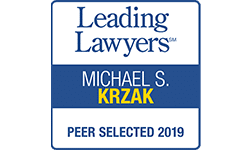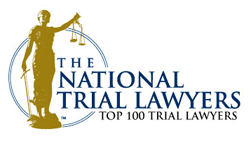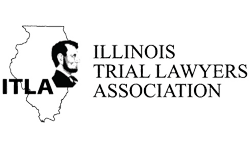The Most Dangerous Intersections in Chicago

In 2023, The Windy City saw 90,043 crashes, 85,982 of which involved motor vehicles, according to the Chicago Department of Transportation. Those same statistics reveal that at least 19,404 fatalities resulted from these auto accidents and 1,583 individuals suffered serious injuries in them. Those casualties would be alarming to almost anyone — and those don’t account for most of our suburbs, but instead the city center.
Every time you get behind the wheel of your vehicle, you know to remain wholly focused on the road and the operation of your vehicle. There are some areas that you may travel into on a daily basis where you need to be extra vigilant to avoid becoming involved in a crash, though. Below, we highlight what are the most dangerous intersections in Chicago so you can exercise a bit more caution when in or around them.
Where Auto Accidents Happen in Chicago
Coming across a central repository listing intersections in Cook County where crashes occur is challenging. However, news stories and combing through information compiled by the Chicago Data Portal are helpful in pinpointing where these collisions occur most.
The Chicago intersections that appear most frequently within that data include:
- Wacker at N. Michigan and N. Columbus
- Cicero and Madison
- Halstead at W. 99th
- Halstead at W. Hubbard
- Lafayette at W. 87th
- Ashland and 95th
- Orleans and W. Ontario
- Stony Island and E. 75th, E. 79th, and also E. 95th
- Ogden at W. Congress
- North Avenue and Damen
- Lake Shore at E. Chicago
- Western at W. Pershing, Belmont, and W. 47th
- Clark and W. Cermak
- Garfield at S. Wells and S. Wentworth
- State at Madison
As for the latter combination of streets, they are known as the “busiest corner of the world,” according to the University of San Diego. This is considered by many as the busiest intersection in Chicago.
What Makes Intersections So Dangerous
Factors that make a crossroad unsafe vary depending on where it’s located and what your role is (i.e., pedestrian, bicyclist, passenger car operator, etc.).
According to the Federal Highway Administration (FHWA), signaled intersections are the most dangerous where crash-related injuries and fatalities occur. The federal agency contends that at least one-third of all fatal auto accidents occur at these crossroads, with most of them being attributable to a motorist running a red light.
Other factors that contribute to intersection crashes occurring include:
- A misunderstanding of traffic laws: A lack of understanding about yielding to the right of way of others at an unsignaled intersection can lead to a Chicago car crash.
- Distractions: These often come from phones, eating, self-grooming, interacting with others inside the vehicle, and being engrossed in something on the radio, but also sometimes because a motorist is focused on something outside their automobile.
- Wrong-way driving: This can occur on Chicago’s busy one-way streets, oftentimes resulting in high-speed head-on crashes.
- Limited Visibility: This can occur due to weather, like snow piled up on a street corner, environmental pollution, such as smog, parallel or illegal parking too close that blocks one’s view, or simply due to there being a lot of pedestrians, cyclists, etc. grouped together on a sidewalk.
Poorly designed infrastructure, driver inexperience, confusing driving behaviors, and many other issues may result in an accident at an intersection in Chicago as well.
What To Do If You’ve Been Involved in a Chicago Intersection Accident
Anytime a crash occurs, whether it happens at a downtown intersection, on a highway, or anywhere else, immediately call the police. Be sure to request that paramedics come to the scene if you believe you or anyone else is hurt. Even if you don’t request for an ambulance to come, be sure to seek immediate medical attention for any potential underlying injuries as soon as you finish making a report on the scene with responding officers.
While you’re waiting on the police or emergency responders, you’ll want to gather any potential evidence you’re able to, which may include just pictures of the scene, vehicle damage, and injuries, or perhaps auto parts that fell off one of the vehicles when the impact occurred. You will also want to get the other driver’s contact and insurance information and that of any witnesses to the crash. Just be sure that you don’t discuss fault with anyone at the accident scene or anyone who may contact you thereafter.
Once you’ve finished at the crash scene and received medical treatment, you’ll want to consider reporting the accident to your auto insurance carrier. If you suffered serious injuries or lost a family member in the wreck and have or expect to incur significant expenses or losses, speaking with a Chicago personal injury attorney about your case to better understand your rights and options before filing a claim with the other driver’s insurance may be best.
At Schweickert Ganassin Krzak Rundio, LLP, we offer free initial consultations to those injured or the surviving family members of those who died in intersection car crashes in Chicago. Let’s sit down and have a conversation about your right to hold responsible parties accountable for the harm you’ve suffered.








